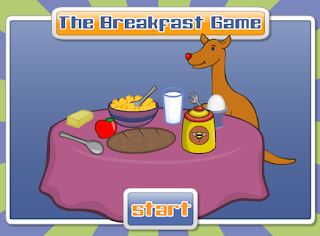domingo, 4 de junio de 2017
domingo, 28 de mayo de 2017
HISTORY
History is everything that happened in the past. History is important because we can learn from the past. We can understand why things happen in our world and use this information to make our lives better.
We can use historical sources to learn about history. Historical sources are objects that give us information about the past. Historical sources can be photos, paintings, written documents, buildings or objects that people used in the past.
We
can use measurements of time to organize information about the past.
· A year is made up of twelve months. · A decade is made up of ten years. · A century is made up of one hundred years. · A millennium is made up of one thousand years. |
miércoles, 24 de mayo de 2017
FOOD GAMES
CLICK: MAZE
>>>>QUIZ FOOD
>>>>>PICTURE-WORD 1
CLICK: THE BREAKFAST GAME
CLICK: FAST FOOD
CLICK: DRINKS
lunes, 15 de mayo de 2017
martes, 9 de mayo de 2017
3*B Clase. Tareas pendientes
ENGLISH UNIT 5
English test.Unit 5. Thursday 11th May 2017= listening and readingEnglish test. Wednesday 17th May 2017= writing [ time and description of animals]
SOCIAL SCIENCE UNIT 7..PRODUCTS=
Tuesday 16th May 2017
Homework.[ Monday, 15th May]Social science. From field to the table
domingo, 7 de mayo de 2017
sábado, 6 de mayo de 2017
martes, 2 de mayo de 2017
SECONDARY SECTOR
Workers in the secondary sector
transform natural materials into products (manufactured
products).
Workers in this sector are:
CRAFT WORKERS:
They use their hands or simple
tools to make products.
Their products:
- take longer to make
-are usually more expensive
- are unique
INDUSTRIAL WORKERS:
They work in factories and use
machines to manufacture products.
There are many different types of
industry:
Food
Automotive
Construction
Textile
Chemicals
Their products:
-lots of identical products and quickly.
-each worker repeat the task over and over.
lunes, 1 de mayo de 2017
domingo, 23 de abril de 2017
PRIMARY SECTOR
Who works in the nature?
The
raw materials are the natural
products that we obtain from the nature (land or sea).
We
get natural products from:
FARMING
LIVESTOCK FARMING
FISHING
MINING
PRIMARY
SECTOR
Workers
obtain the raw materials from the nature.
1.ARABLE
FARMING:
It is the farming of plants.
a. Dry crops: they need only rainwater
to grow
b. Irrigted crops: they need extra water from lakes,
rivers or wells to grow.
2.
LIVESTOCK FARMING:
It is the farming of
animals.
- sheep farming
-goat farming
-cattle farming
- pig farming
-equine farming
- poultry farming
The farming of animals can be:
a. In extensive farming: the animals spend a lot of time outdoors, in open spaces. They
can move around freely and eat grass and insects.
b. In intensive farming: the animals keep in
enclosed spaces, often indoors.
3.FISHING:
It is the catching fish,
shellfish, seaweed from rivers, lakes and oceans
a. maritime
fishing: takes place at the seas and oceans
deep-sea fishing takes place far out at
the sea.
coastal fishing takes place near the coast.
b.fluvial fishing: takes place in rivers or lakes.
4.
MINING:
It involves extracting
rocks and minerals (coal, silver, gold...) from the surface or from inside the
Earth.
a. Underground mining: is extracted in
deep tunnels below the Earth's surface.
b. Surface mining: is extracted from near
the surface of the Earth.
Suscribirse a:
Comentarios (Atom)

























































